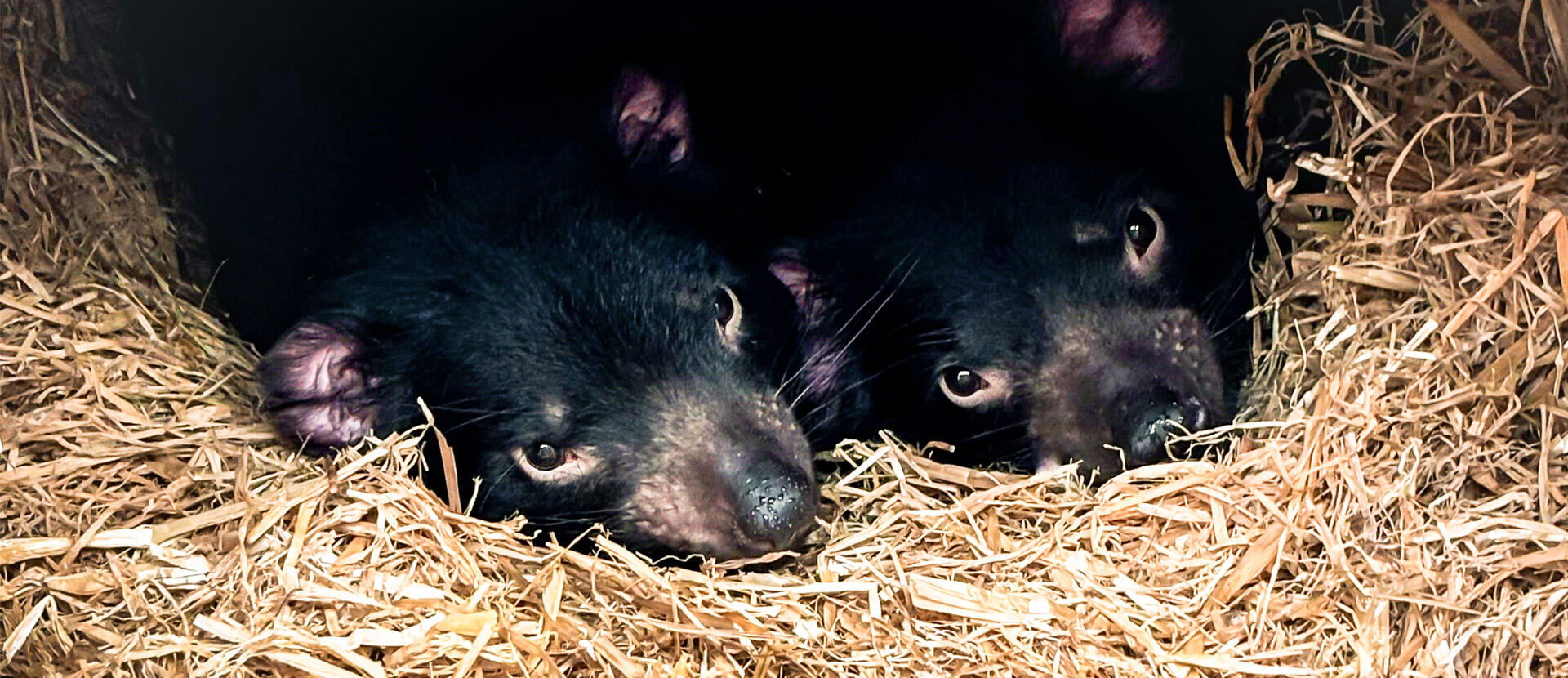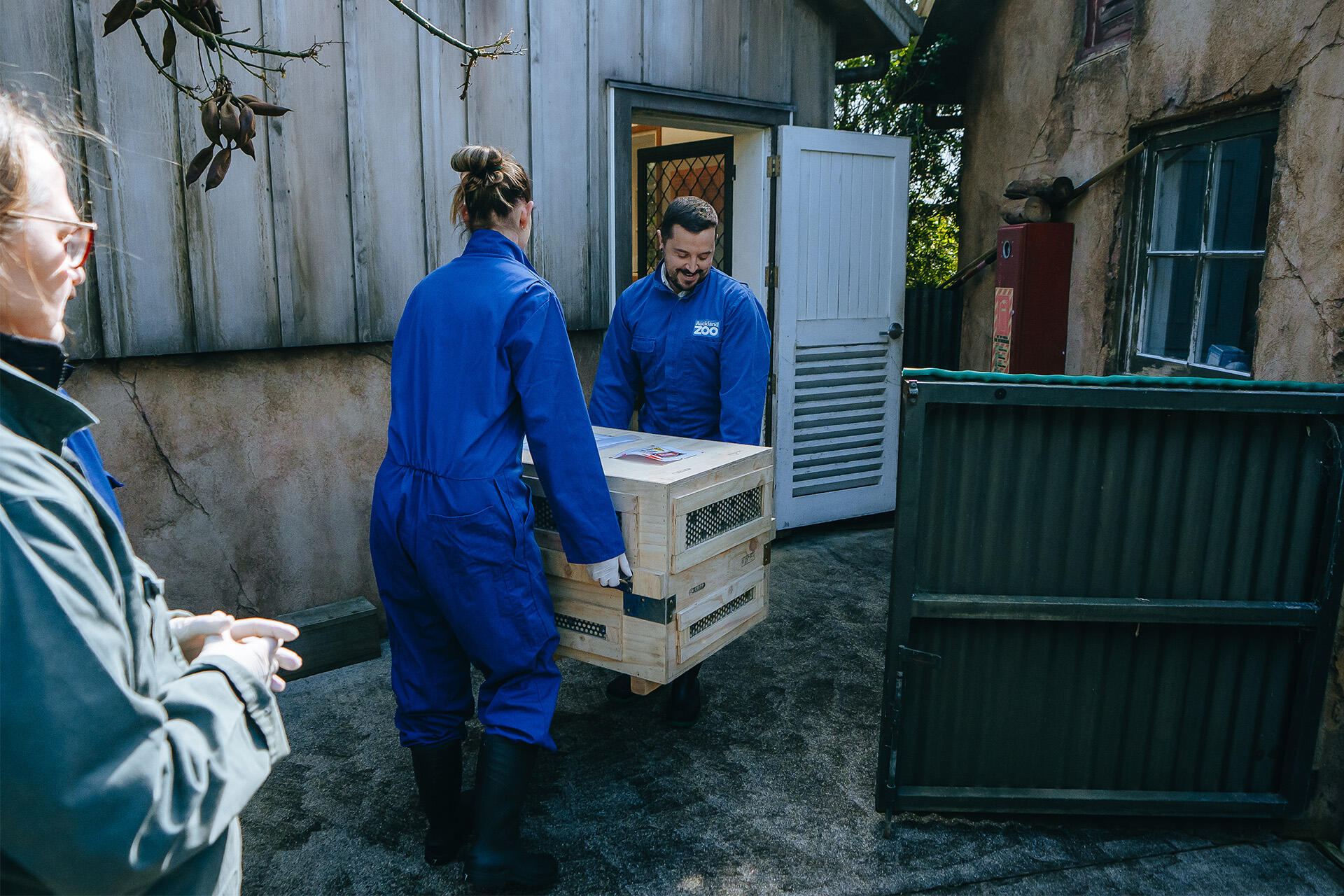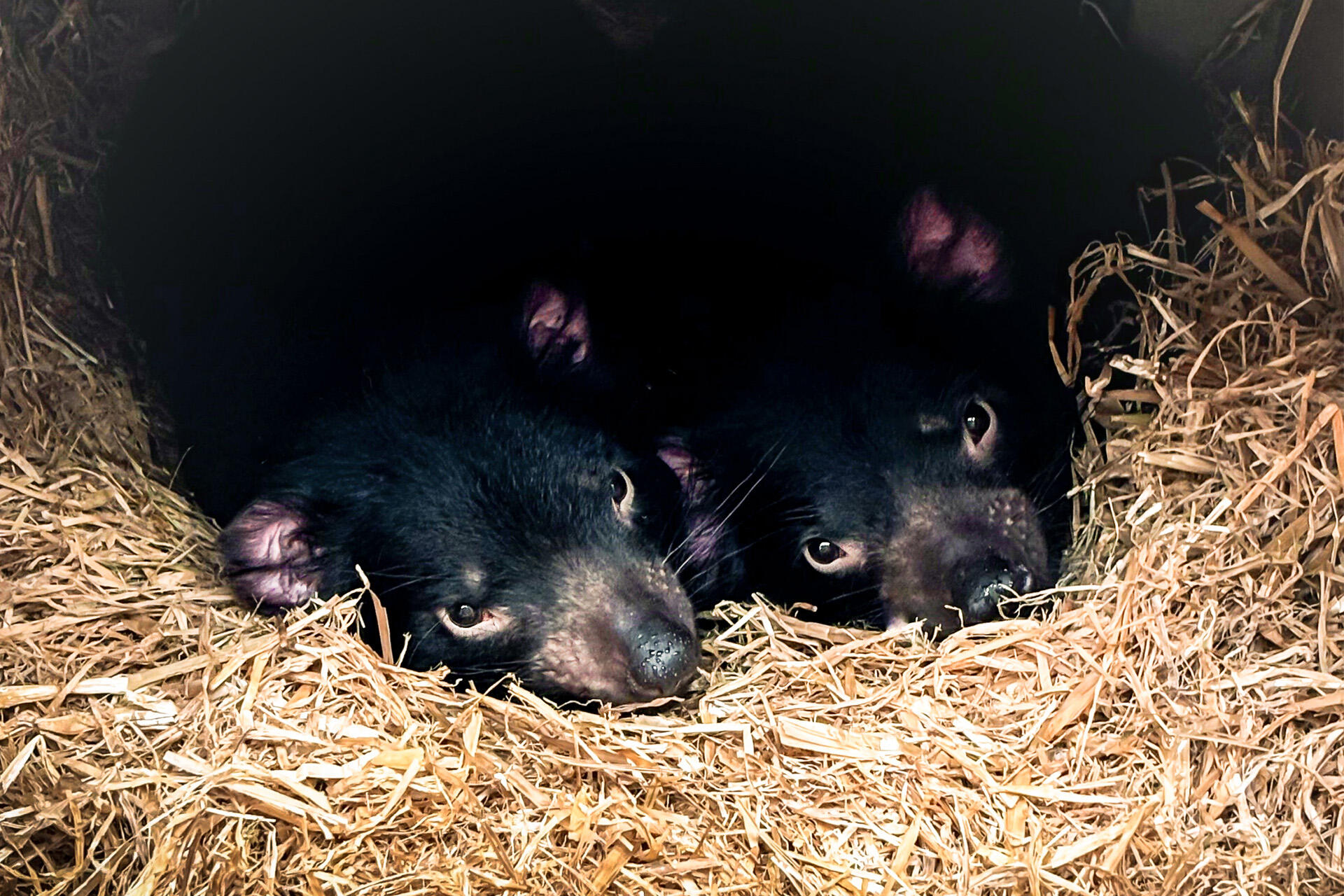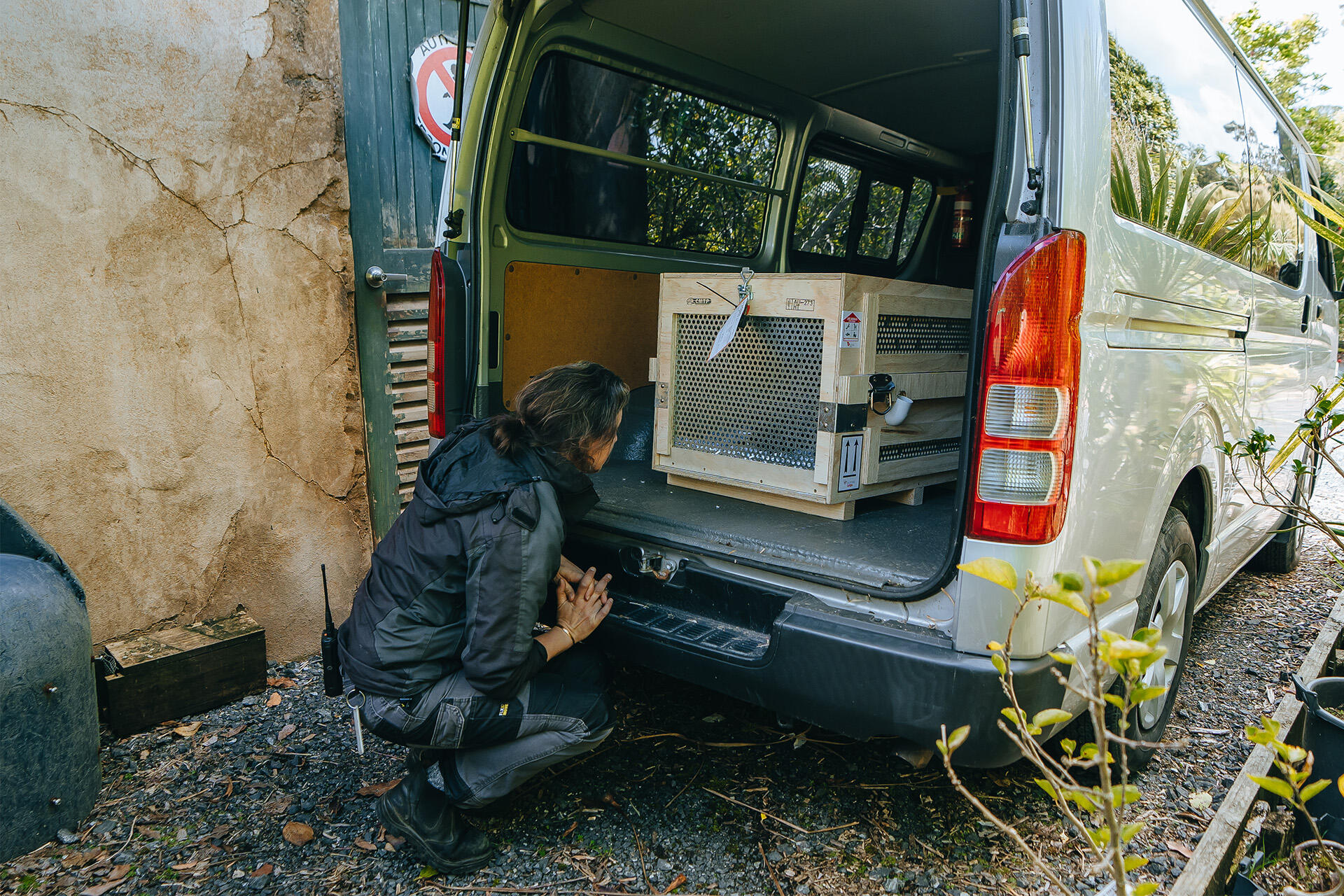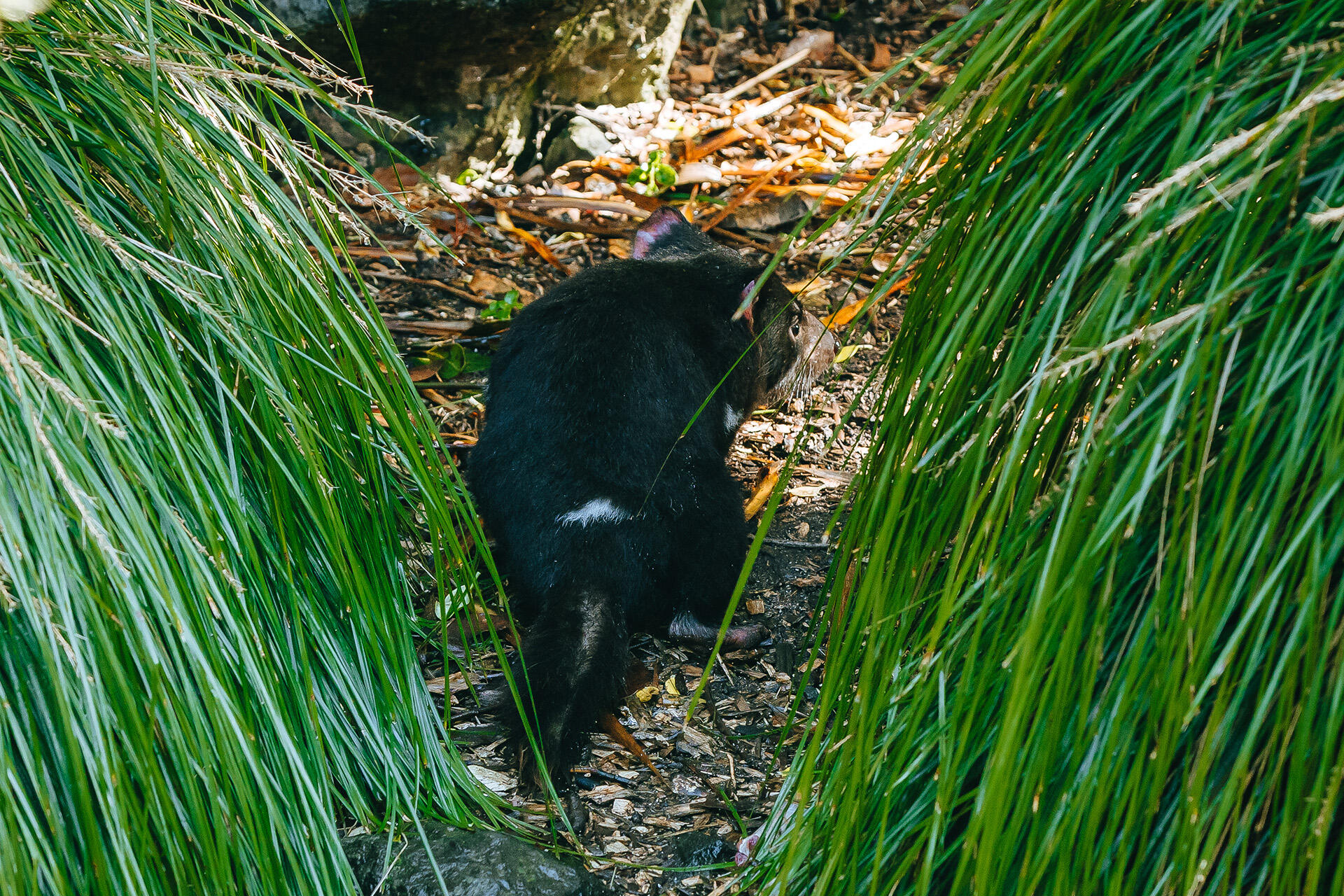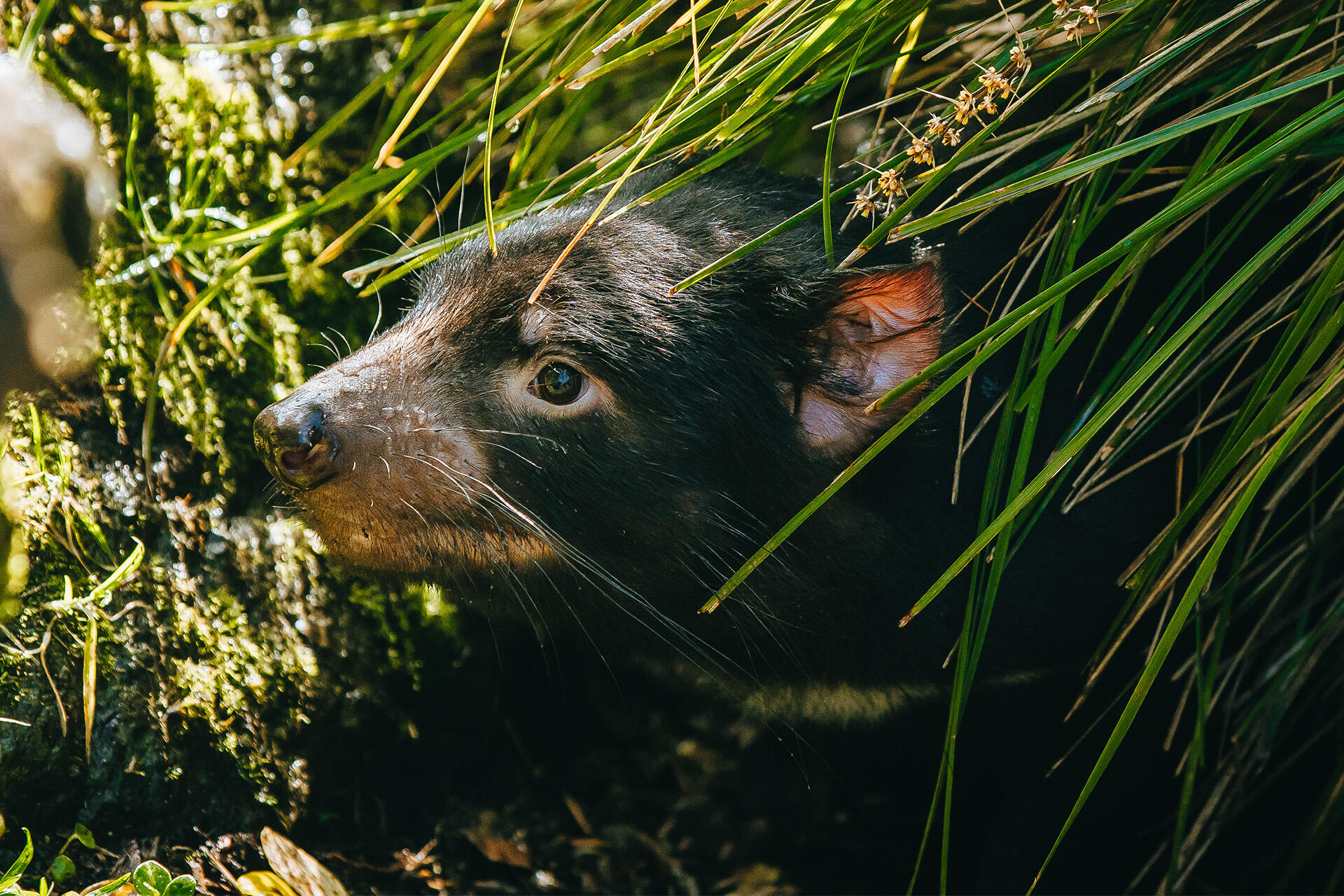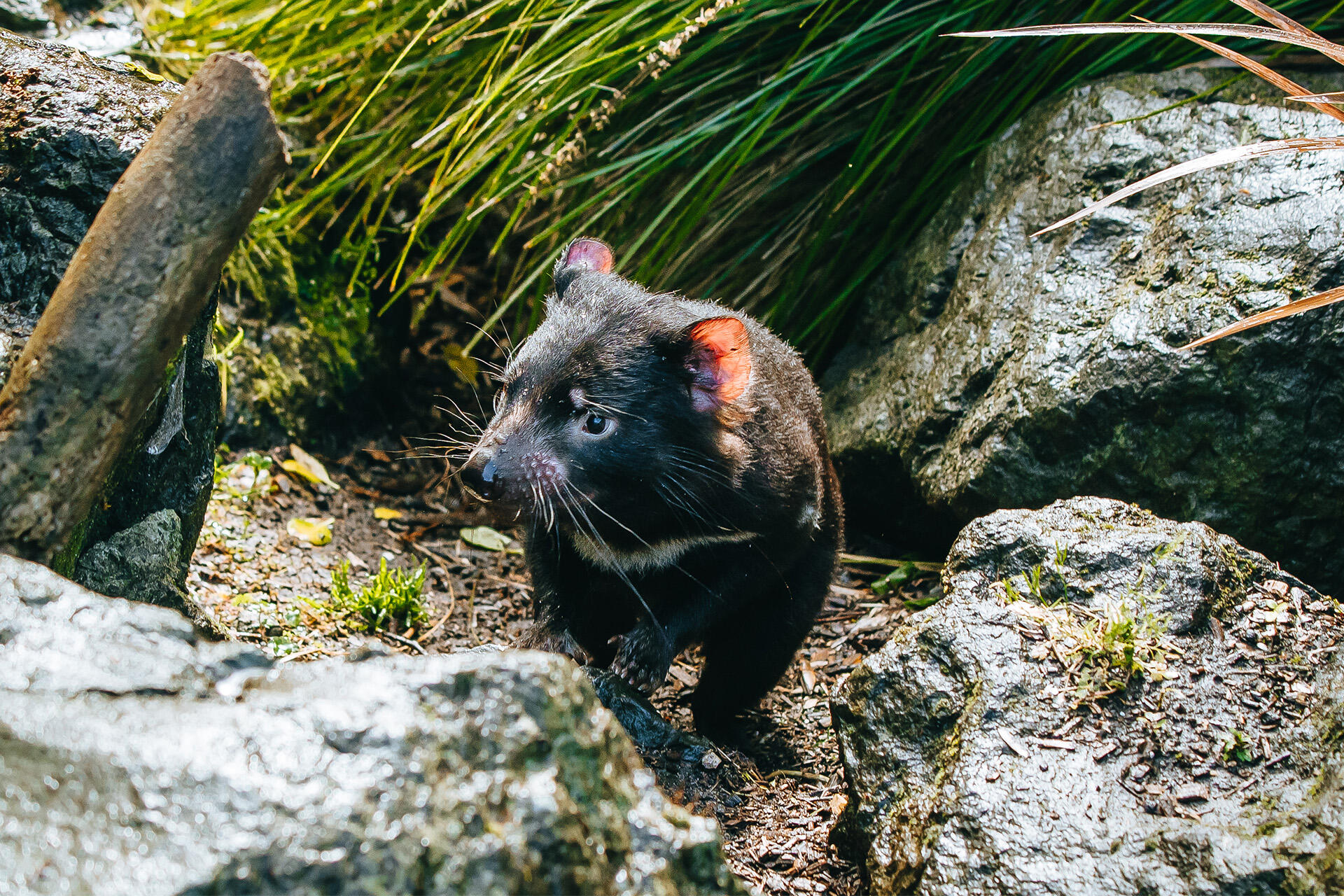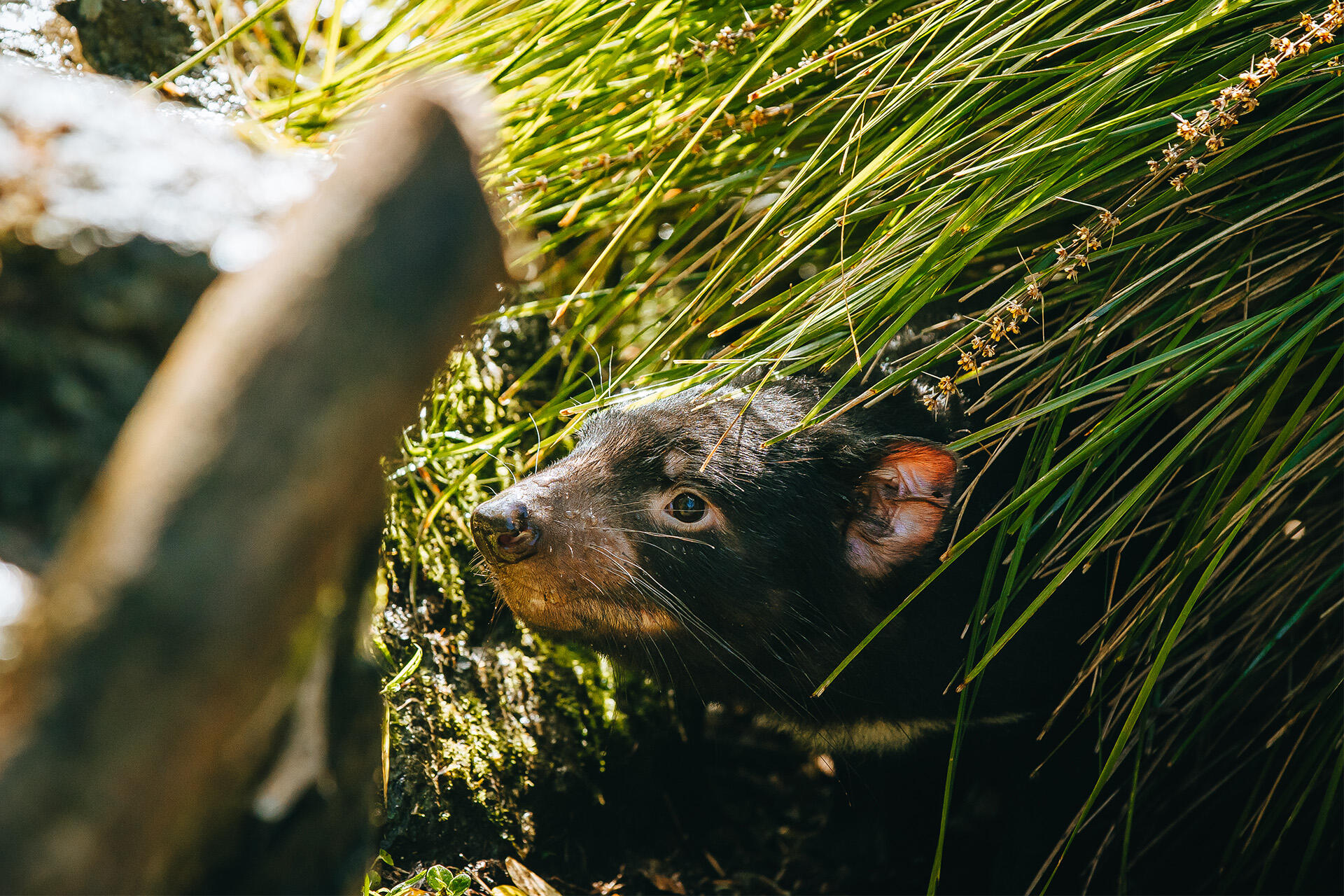Auckland Zoo’s lead carnivore keeper, Nick Parashchak, who spent time in Tasmania working alongside colleagues at Cressy in preparation for the sisters’ arrival, says there’s a lot to love about these remarkable and endearing animals.
“Historically, the Tasmanian devil hasn’t been well understood. In contrast to its infamous cartoon character, real devils are beautiful animals, naturally quite timid and shy, but also extremely curious. They have many distinct (and some very loud and fierce sounding!) vocalisations and physical gestures, but most are a bluff and part of rituals and strategies to avoid fighting to prevent harming each other, including when they come together to feed on a carcass. And some devil vocalisations are just the equivalent of a friendly Aussie ‘gidday how are you?’ so shouldn’t be mistaken for aggressiveness,” says Nick.
“While still getting used to a whole new world of sights, sounds and smells since arriving on 4 September, our night cameras reveal they’re having the time of their lives exploring the habitat when they’re not sleeping together in their nest box. They’ve been digging and climbing, and clearly love seeing male devil Nita (5). He’s viewable from his separate area, and their presence is great stimulation for him too. Nita is very active, including during the day, and in time as these sisters fully settle in our visitors are likely to experience a lot more devil action and discover more about what makes this species so special.”
As apex predators that scavenge on sick and dead animals, devils play a critical role in maintaining the health of the forest and coastal woodland ecosystems in which they live.
Auckland Zoo’s two new arrivals, along with male devil Nita, are among 54 ambassador devils now in zoos in New Zealand, Singapore, Japan, Europe, and the USA.


